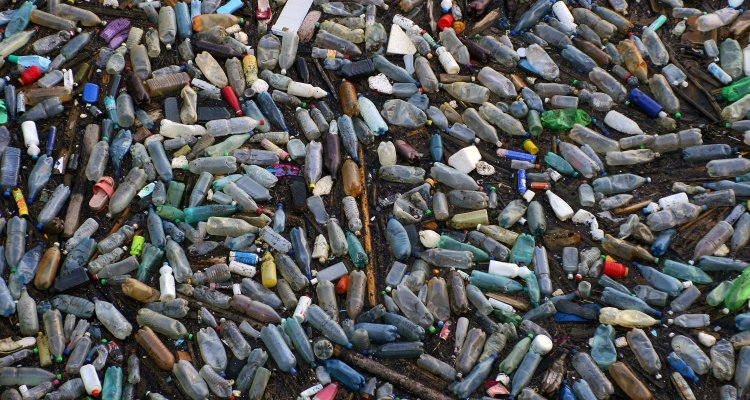
News
All sorts of plastic - NRC Guest Blog by Dr Judith van Leeuwen
This blog post is is the second of our new series of Dutch blog posts on important issues from the field of environmental policy on NRC online. You can find the original article (in Dutch) here.
In the Swiss mountains, in the deepest crevice in the world, in the ice at the North Pole, in the fish on our plates and now even in our own faeces – plastic is everywhere. The visibility of plastic pollution has changed our valuation of plastic. No longer a handy and inexpensive material, plastic has become one of the biggest environmental problems of the future, comparable to climate change.
Governments, companies and environmental organisations are looking for solutions. For example, Stichting de Noordzee and the International Ocean Conservancy are trying to raise awareness with beach clean-up campaigns. Companies use plastic from the oceans as a raw material for shoes, carpets, soap containers or laptops. Countries are stimulating a circular plastic system by improving the collection and recycling of plastic waste and by legally reducing the use of (free) plastic bags in shops. Even the use of microplastic in cosmetic products is being restricted in increasingly more countries.
I have been researching plastic pollution for a year, and I am impressed by the variety of initiatives. But I have also noticed that many of these initiatives focus on the sale or purchase of plastic products and cleaning up plastic waste – in other words, on plastic consumption. The manufacturers themselves are not directly affected.
Moreover, many initiatives fail to offer solutions for less developed countries. Countries such as China, Indonesia and India, who significantly contribute to plastic pollution, lack collection and recycling systems for plastic waste. Nor do they have systems to encourage the separated collection of plastic. Some plastic products in these countries (such as water bottles) are important because they increase hygiene and food safety.
There is little connection between most initiatives. And there is certainly no international strategy on how to deal with plastic pollution in either the short or long term. The current approach is nothing more than a first baby step.
User friendly
Plastic is cheap, handy, strong and light, which makes it user-friendly. But not all sorts of plastic are the same. Depending on your classification, there are between seven to ten different polymers that are used to make more than two hundred sorts of plastic. When deciding on possible solutions, it’s important to consider the sort of plastic and product being used.
Even more important is that we understand how the production, consumption and waste of plastic are interlinked. And how that differs among products and among countries. Only when we are aware of all those different links we can come up with ways (via the production process, consumption or waste processing) to ensure that plastic will no longer pollute the environment. Is it possible to organise a circular chain or is it desirable (and feasible) to replace plastic with other materials? When are such options possible and when are they not?
As a social sciences researcher studying plastic pollution and solutions, I first have to know what plastic is. But also why companies make what they make, what the technical possibilities are to either replace or recycle plastic, why consumers are dependent on plastic and where and how plastic becomes waste and pollution.
Plastic pollution is thus a perfect interdisciplinary area of study in which social sciences should work together with, for example, technologists, economists, anthropologists and geographers. And, given the willingness to change, there are possibilities of working on this research together with government agencies, companies and interested parties. Scientific knowledge can then be quickly translated into practical applications.